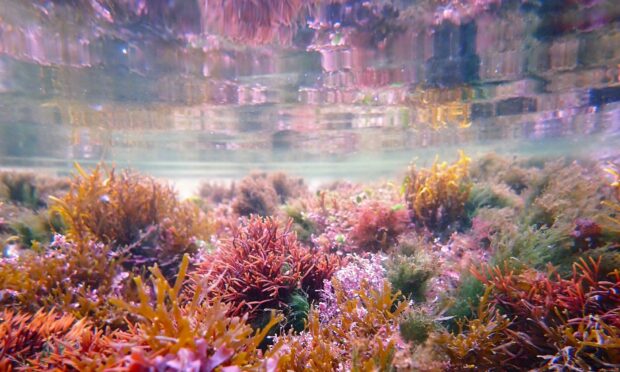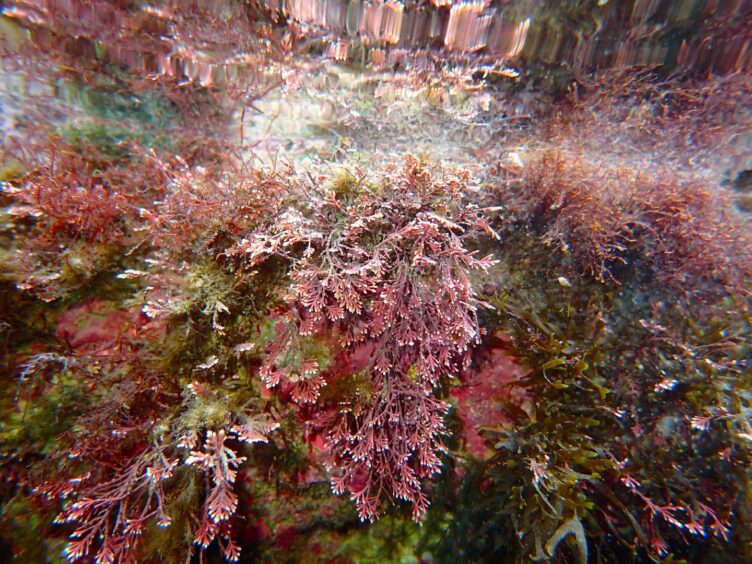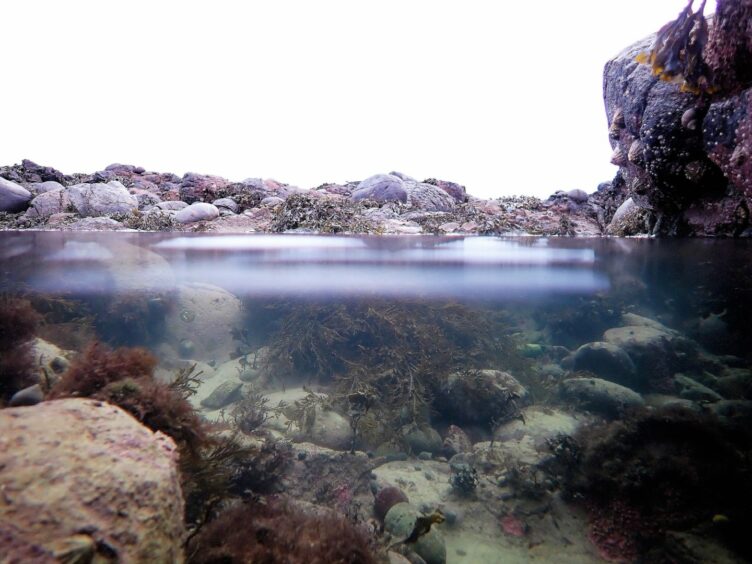Like a magical oasis, this rockpool at Catterline Bay south of Stonehaven sparkled and danced, with its multitude of colourful seaweeds drawing the eye like an irresistible lure.
There were brown, red and green seaweeds, but it was the splash of vibrant pink that shone out above all else – so bright and vibrant, it was as if it had been conjured by an artist’s brush.
I hunkered down to examine the rockpool more closely, parting fronds of bladder wrack seaweed with my fingers to reveal the pink encrustation that lay beneath.
Wild beating heart
Hard to the touch, it was difficult to comprehend that this was a lifeform, a part of the rockpool’s wild beating heart.
This was a pink encrusting coralline alga known as paint weed, no doubt because it does indeed resemble a daub of paint.
Adjacent to the paint weed lay another red-pink growth, although this resembled a more typical seaweed with little branched fern-like fronds.
I brushed my fingertips across the growth, which felt rough.
This was coral weed, which is often found on the lower shore.
It is called coral weed because like corals, it undergoes a process called calcification.
Having a skeletal like form acts as protective shield, preventing other creatures from grazing upon it.
Entranced by beauty
Despite the cold, I lingered for a while longer by this pool, entranced by the beauty of the seaweeds held within, which included many of the more familiar brown and green types.
Seaweeds are marine algae and need sunlight to produce their food but also absorb nutrients directly from the sea through their fronds.
I wandered to the upper shore where in shallow pools prospered an abundance of gutweed.
When exposed from the water, it appears like a green slime, but look closer and it is a seaweed of intricate design with its tubular shaped strands.
I placed my camera under the water of one pool and took some random shots in the hope of capturing their inherent elegance.
The results were better than expected, their emerald fronds glimmering in the water.
Interesting geology
The shore at Catterline is most interesting geologically, comprising conglomerate rock shelves and a broad sweeping shingle bay, which was believed to the landing point for St Ninian in the fifth century as he began the conversion of Picts to Christianity.
I brought my binoculars to bear upon a rocky islet off the southern end of the bay where a large number of herring gulls had congregated.
On one end of the islet, several grey seals lazed, their plump bodies testament to the rich fishing found in the surrounding waters.
But the allure of the rockpools proved overwhelming, so I ventured down to the lower shore once more.
A crimson coloured beadlet anemone glowed from the corner of one pool, its tentacles extended as it gleaned plankton from the water.
It was a true wonder of nature and as I appreciated its beauty, I couldn’t help but ponder what other living miracles lay within the watery depths of the pool..














Conversation